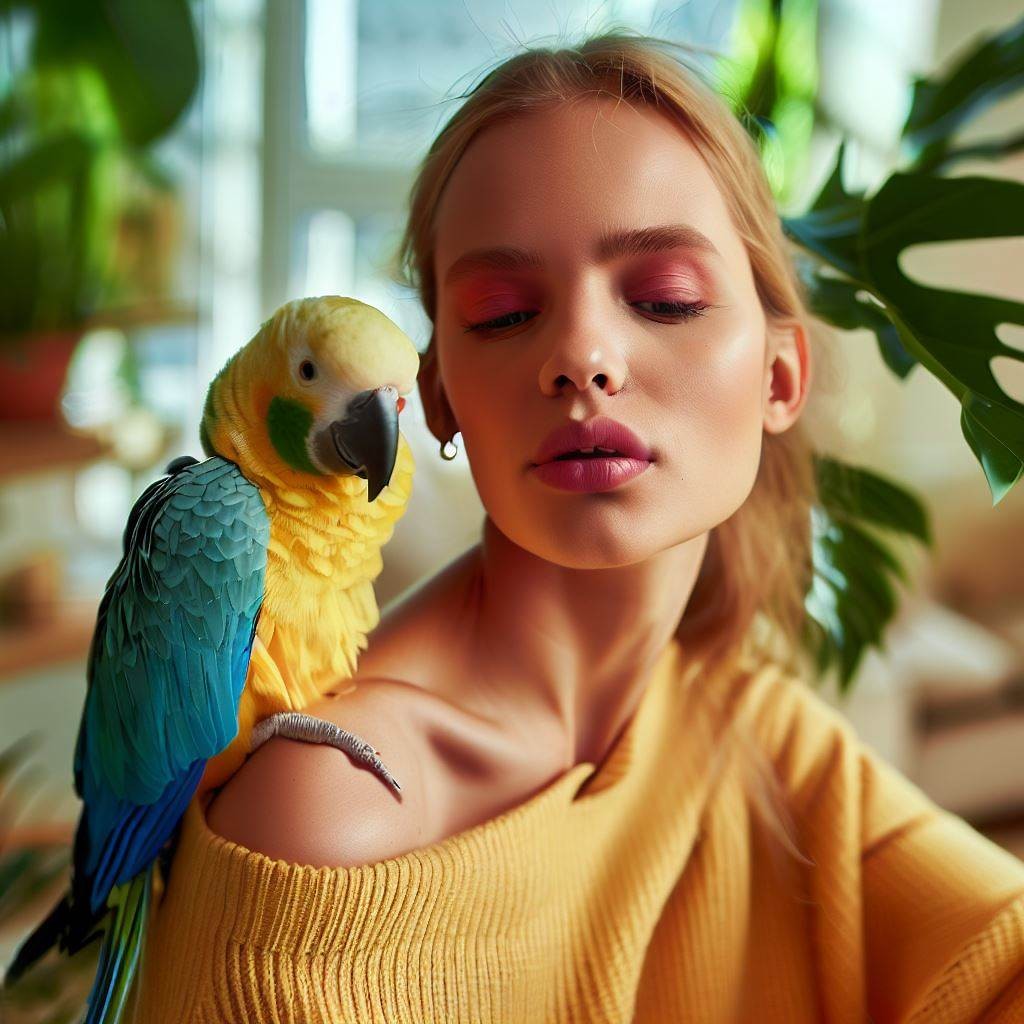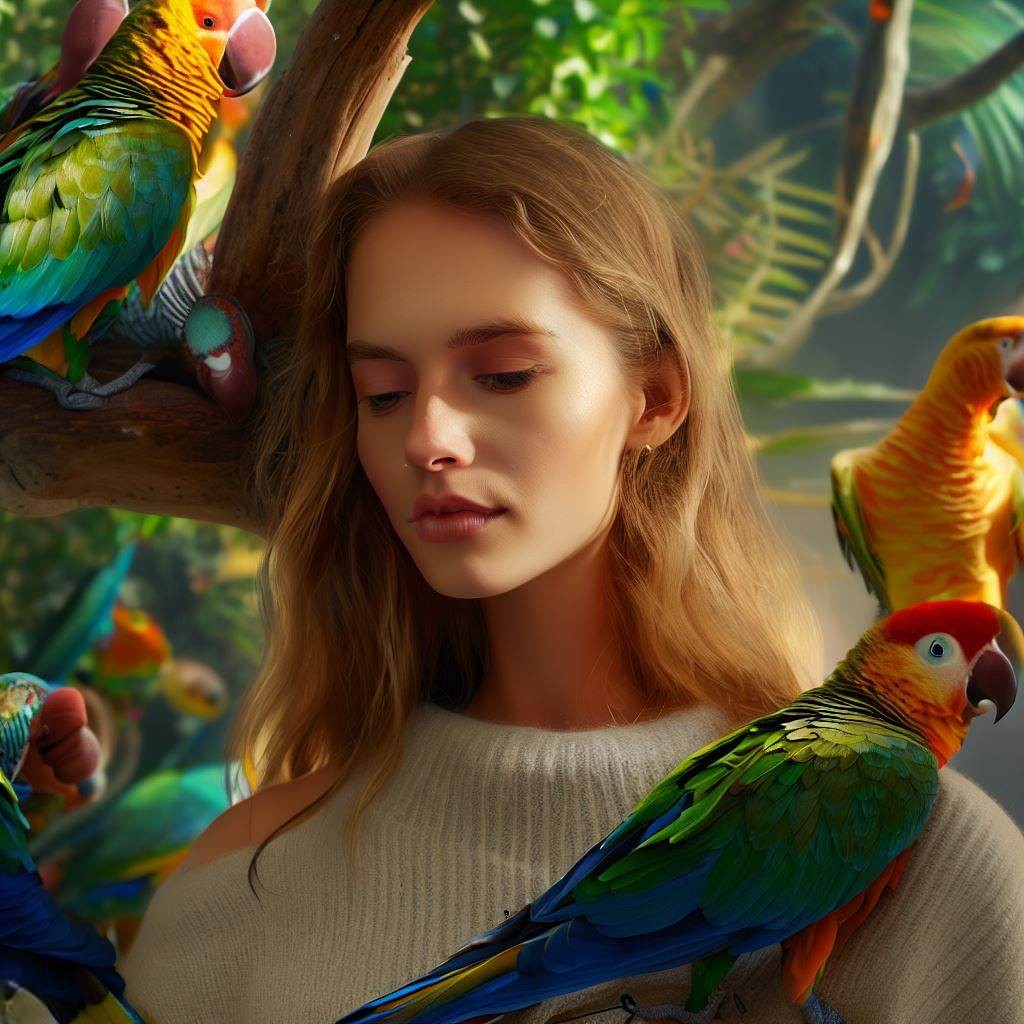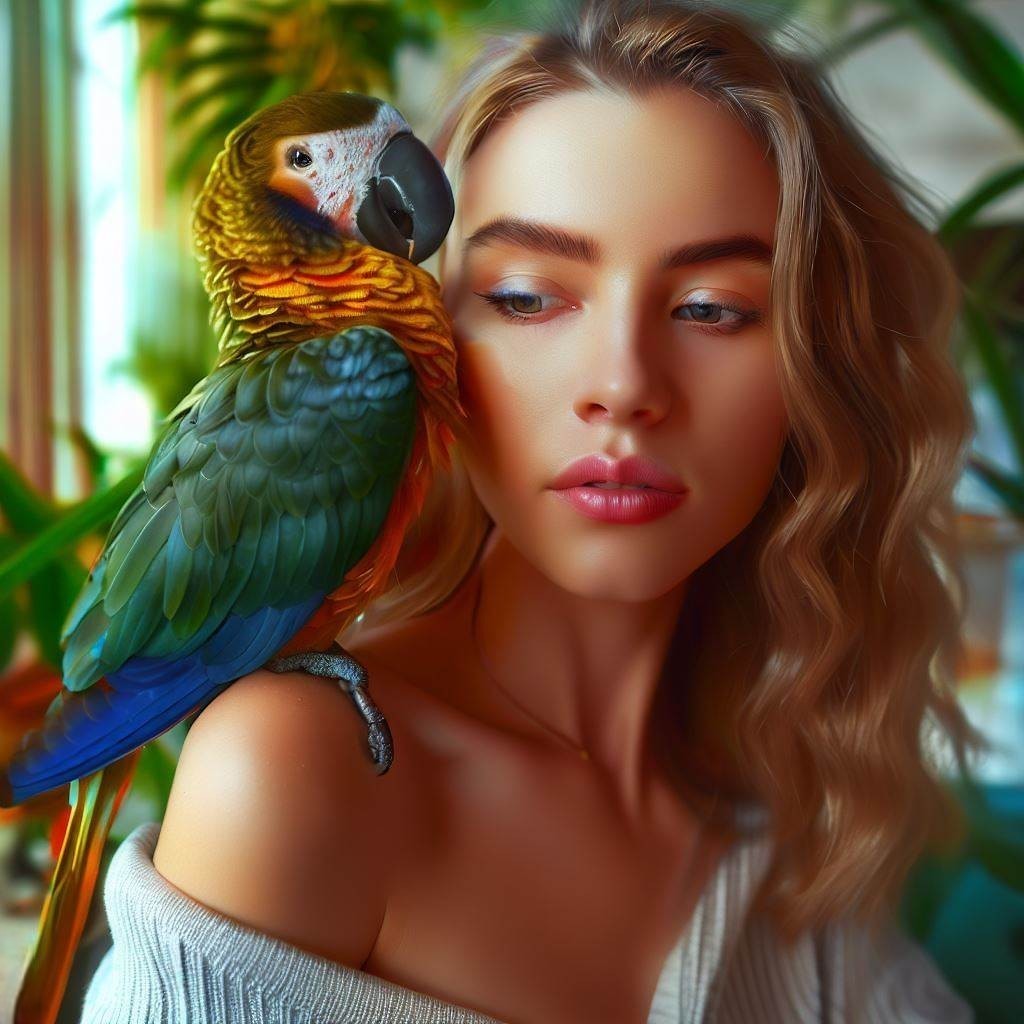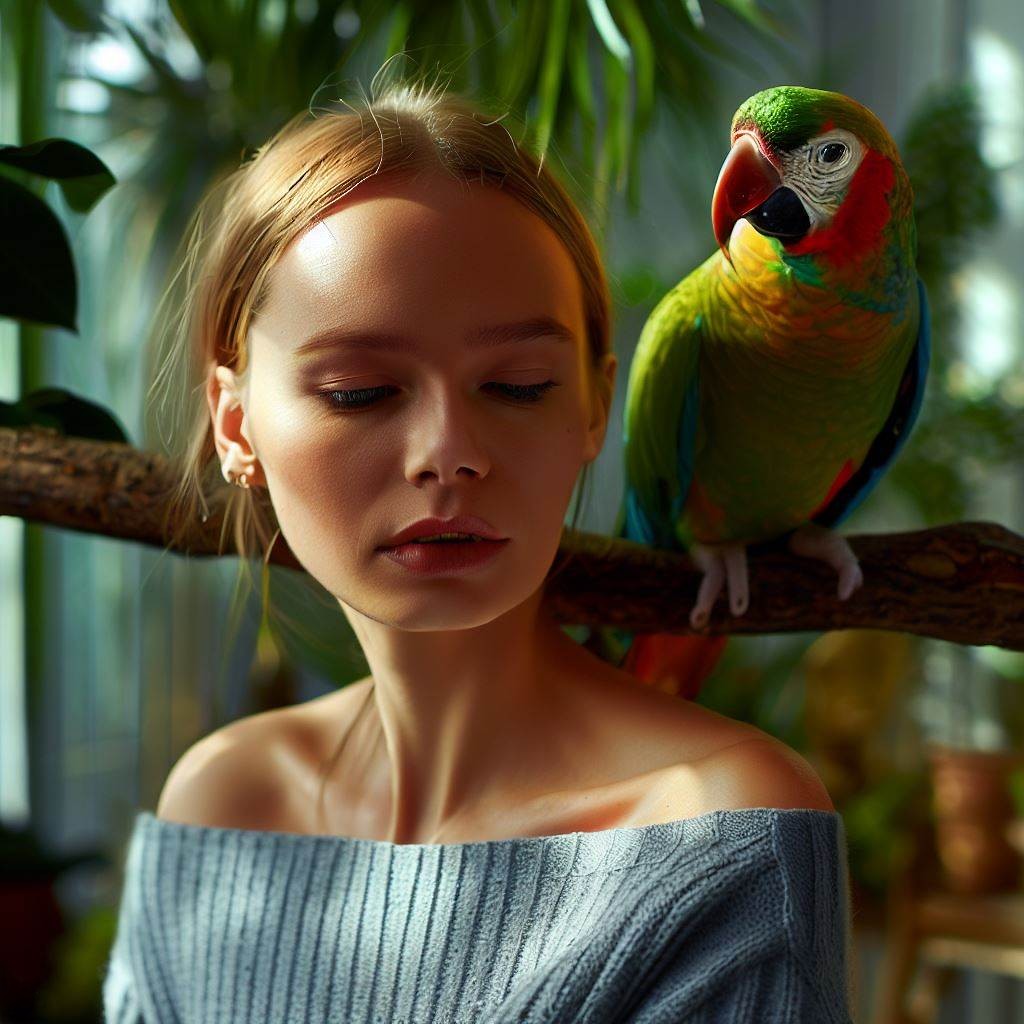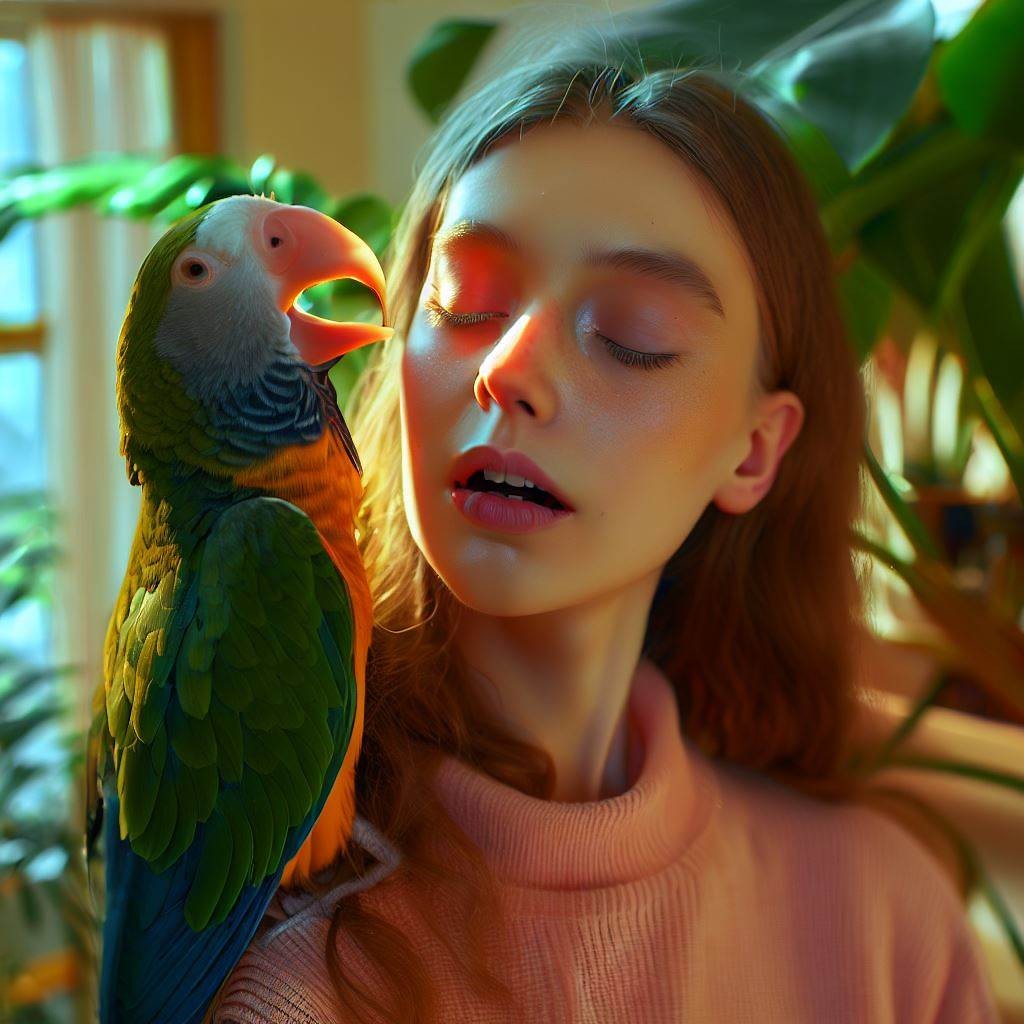Parrots, with their vibrant colors and capacity for mimicry, have fascinated humans for centuries. However, these lively birds are more than just their outwardly entertaining characteristics. Parrots are renowned for their intelligence and social nature, possessing emotional capabilities that rival, and at times, surpass those of other pets. This article explores the depth of parrots’ emotional lives, their unique communication methods, and the recent scientific discoveries that have reshaped our understanding of these complex creatures.
Parrots, with their vibrant colors and capacity for mimicry, have fascinated humans for centuries. However, these lively birds are more than just their outwardly entertaining characteristics. Parrots are renowned for their intelligence and social nature, possessing emotional capabilities that rival, and at times, surpass those of other pets. This article explores the depth of parrots’ emotional lives, their unique communication methods, and the recent scientific discoveries that have reshaped our understanding of these complex creatures.
Parrots, with their vibrant colors and capacity for mimicry, have fascinated humans for centuries. However, these lively birds are more than just their outwardly entertaining characteristics. Parrots are renowned for their intelligence and social nature, possessing emotional capabilities that rival, and at times, surpass those of other pets. This article explores the depth of parrots’ emotional lives, their unique communication methods, and the recent scientific discoveries that have reshaped our understanding of these complex creatures.
Parrots, known for their vibrant plumage and impressive mimicry skills, are among the most popular pets worldwide. Yet, their allure goes far beyond their aesthetic appeal and their ability to replicate human speech. Inherently social creatures, parrots form complex relationships both with their own kind and with their human caregivers. This blog post delves into the fascinating social nature of parrots, exploring their social structures, the bonds they form with humans, and the emotional implications of these relationships.
Parrots, known for their vibrant plumage and impressive mimicry skills, are among the most popular pets worldwide. Yet, their allure goes far beyond their aesthetic appeal and their ability to replicate human speech. Inherently social creatures, parrots form complex relationships both with their own kind and with their human caregivers. This blog post delves into the fascinating social nature of parrots, exploring their social structures, the bonds they form with humans, and the emotional implications of these relationships.
Parrots, known for their vibrant plumage and impressive mimicry skills, are among the most popular pets worldwide. Yet, their allure goes far beyond their aesthetic appeal and their ability to replicate human speech. Inherently social creatures, parrots form complex relationships both with their own kind and with their human caregivers. This blog post delves into the fascinating social nature of parrots, exploring their social structures, the bonds they form with humans, and the emotional implications of these relationships.
Parrots are widely known for their vibrant colors and ability to mimic human speech. However, beneath these well-known characteristics lies a complex social structure that is often overlooked. In the wild, parrots live in large flocks, engaging in cooperative behaviors that play a crucial role in their survival and well-being. This post explores the intricate ‘flock mentality’ of parrots, their roles within the group, their communication methods, and the emotional implications of this social interaction.
Parrots are widely known for their vibrant colors and ability to mimic human speech. However, beneath these well-known characteristics lies a complex social structure that is often overlooked. In the wild, parrots live in large flocks, engaging in cooperative behaviors that play a crucial role in their survival and well-being. This post explores the intricate ‘flock mentality’ of parrots, their roles within the group, their communication methods, and the emotional implications of this social interaction.
Parrots are widely known for their vibrant colors and ability to mimic human speech. However, beneath these well-known characteristics lies a complex social structure that is often overlooked. In the wild, parrots live in large flocks, engaging in cooperative behaviors that play a crucial role in their survival and well-being. This post explores the intricate ‘flock mentality’ of parrots, their roles within the group, their communication methods, and the emotional implications of this social interaction.
Parrots, admired for their vibrant plumage and remarkable ability to mimic human speech, are complex social creatures with intricate group dynamics. Within a parrot flock, every bird has a role to play, contributing to the overall survival and well-being of the group. This blog post delves deeper into the roles within a parrot flock, the fluidity of these roles, and the social intelligence they demonstrate.


